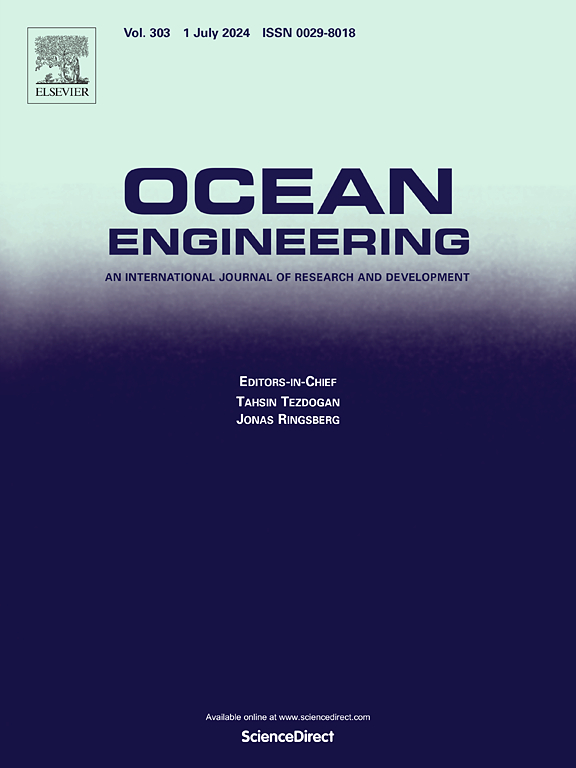Numerical study on dissipation rates of wave and roller energies under spilling breakers: Closures for dissipation rates
IF 5.5
2区 工程技术
Q1 ENGINEERING, CIVIL
引用次数: 0
Abstract
This study uses computational fluid dynamics (CFD) simulations with the Reynolds stress model to investigate surf-zone hydrodynamics under spilling breakers, focusing on the dissipation rates of wave and roller energies. Two sets of full-scale CFD simulations are performed: one on a planar beach and the other on a barred beach. The flow field is decomposed into wave and roller components based on the vorticity values, from which the energy fluxes are extracted. Based on planar beach simulations, two new closures are proposed to determine the dissipation rates. The novelties of the closures include (i) an evolution equation for the time scale of wave-energy dissipation, and (ii) a roller-property-based time scale for roller-energy dissipation. Barred beach simulations validate the proposed closures. Jointly, these closures enable accurate predictions of the wave and roller energy fluxes in the surf zone under spilling breakers, reducing the normalized root-mean-square error by approximately 70 % and 50 % for wave and roller energy fluxes, respectively, on planar beaches compared to existing formulations.
溢流破浪作用下波浪和滚子能量耗散率的数值研究:耗散率的闭包
本研究采用计算流体力学(CFD)模拟和雷诺应力模型研究了溢流型破浪作用下的冲浪区流体力学,重点研究了波浪和滚子能量的耗散率。进行了两组全尺寸CFD模拟:一组在平面沙滩上,另一组在条状沙滩上。根据涡度值将流场分解为波浪和滚子分量,从中提取能量通量。在平面海滩模拟的基础上,提出了两种新的闭包来确定耗散率。闭包的新颖之处包括:(i)波浪能量耗散时间尺度的演化方程,以及(ii)基于滚子属性的滚子能量耗散时间尺度。禁止海滩模拟验证了提议的关闭。与现有公式相比,这些闭包能够准确预测溢出破浪下冲浪区的波浪和滚子能量通量,将平面海滩上波浪和滚子能量通量的归一化均方根误差分别降低约70%和50%。
本文章由计算机程序翻译,如有差异,请以英文原文为准。
求助全文
约1分钟内获得全文
求助全文
来源期刊

Ocean Engineering
工程技术-工程:大洋
CiteScore
7.30
自引率
34.00%
发文量
2379
审稿时长
8.1 months
期刊介绍:
Ocean Engineering provides a medium for the publication of original research and development work in the field of ocean engineering. Ocean Engineering seeks papers in the following topics.
 求助内容:
求助内容: 应助结果提醒方式:
应助结果提醒方式:


